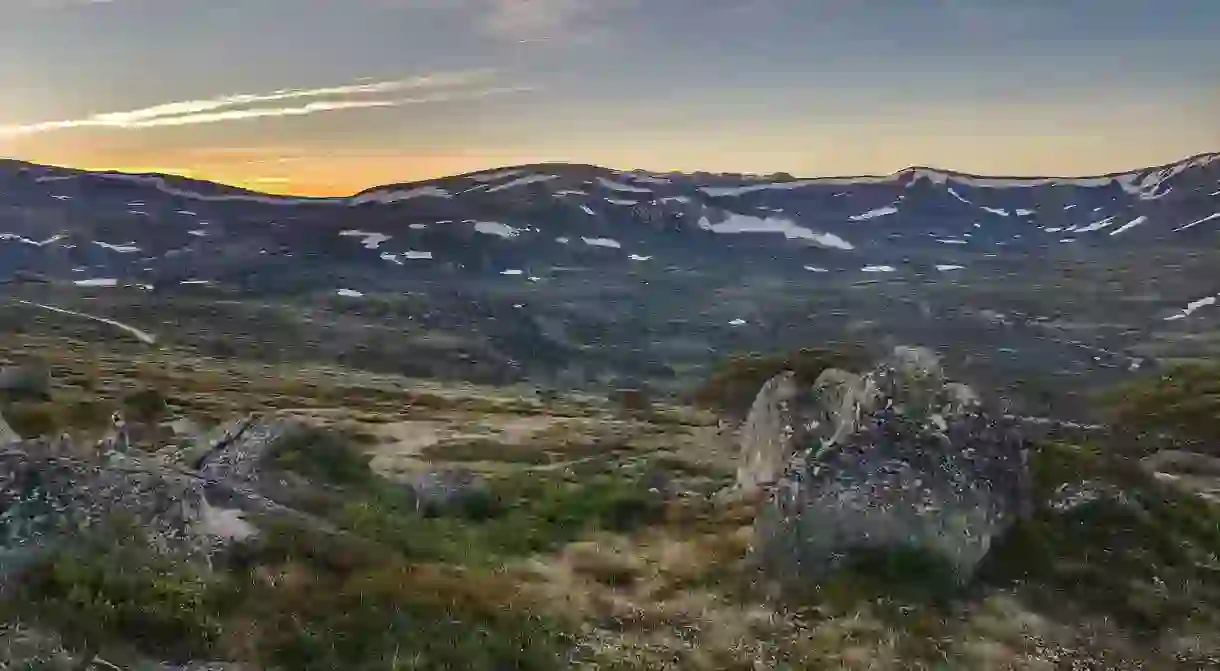How to Conquer Mt. Kosciuszko, Australia's Highest Mountain

Ever thought about tackling Mount Kosciuszko? The highest mountain in Australia, it’s located on the Snowy Mountains’ Main Range, in Kosciuszko National Park in New South Wales. Read on for our guide to Mount Kosciuszko, including information on the various trails to the all-important summit.
The mountain
Mount Kosciuszko is 2,228 metres (7,310 ft) above sea level. This means it’s almost exactly a quarter of the height of Mount Everest. Polish explorer Sir Paweł Edmund Strzelecki named it Mount Kosciuszko in 1840, after General Tadeusz Kosciuszko, a Polish-Lithuanian and American hero. He believed it resembled Kosciuszko Mound in Krakow, Poland. Until 1977, it was actually possible to drive close to the Mount Kosciuszko summit, but the road was closed due to environmental concerns.

The climb
The Mount Kosciuszko Summit Walk is the easiest of the Seven Summits – the highest mountains on each continent. Anyone with a moderate level of fitness should be able to reach the top. The best time to hike to the summit is between December and March, when the snow has melted and the alpine wildflowers are blooming. Wildflowers you might spot include silver daisies, marsh marigolds, and mountain roses. Mount Kosciuszko is covered in snow from approximately June to October.
You can reach Mount Kosciuszko’s summit from two different locations: Thredbo or Charlotte Pass. The main difference is that the Thredbo experience includes taking the Kosciuszko Express Chairlift. From Thredbo, it’s a 13-kilometre return trip (four to five hours). From Charlotte Pass, it’s 18 kilometres return (or six to eight hours).

Thredbo
Firstly, enjoy the scenic ride on the Kosciuszko Express Chairlift. From the top of the chairlift, there’s a walkway to follow for five kilometres (3.1 miles) to Rawson Pass. The walkways are made from steel and mesh, to help protect native vegetation and prevent erosion. This track winds above Lake Cootapatamba, Australia’s highest lake. From Rawson Pass, it’s 1.4 kilometres (0.87 miles) to the summit.
Charlotte Pass
From Charlotte Pass, the road to Rawson Pass is open to walkers and cyclists, which stretches for 7.6 kilometres (4.7 miles). This is where it meets up with the Thredbo path, and everyone walks to the Mount Kosciuszko summit on the same path. Cyclists must dismount and leave their bikes at the supplied bike rack at Rawson Pass. The road becomes a cross-country skiing destination in the wintertime.

Alternatively, there’s the 22-kilometre (14-mile) Main Range walking track that also departs from Charlotte Pass. This allows adventurous hikers to see more of Kosciuszko National Park, and hike through glacier-carved landscapes and an UNESCO Biosphere Reserve. Hikers will pass Hedley Tarn and Blue Lake, as well as wildflower meadows. From the summit, the track loops back to Charlotte Pass by the Mount Kosciuszko Summit Walk.
Hannel’s Spur Track
The most challenging way to reach the Mount Kosciuszko summit is via the Hannel’s Spur Track. It’s Australia’s largest vertical ascent at 1,800 metres (one mile). In 1840, this is the route Sir Strzelecki climbed to reach Mount Kosciuszko. The Hannel’s Spur Track passes through the Western Fall Wilderness Zone. This means hikers experience four different biodiversity bands during their ascent.

Important tips
Firstly, don’t forget to apply (and continually reapply) sunscreen, no matter what time of year you climb Mount Kosciuszko. You should also be prepared with a windbreaker or jacket, as the wind chill can reach below 10°C at the summit, even in the summertime. Australia’s highest toilet was also conveniently built on the Summit Walk in 2007, as more than 100,000 people hike up the mountain every season. It’s also beneficial to read the NSW National Parks and Wildlife Service’s bushwalking safety tips before tackling the summit.













